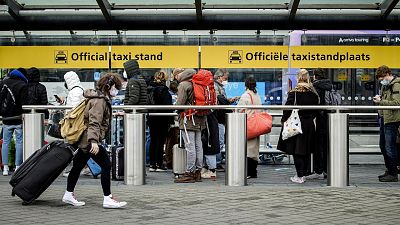When will air passenger numbers recover from COVID?

At the start of the COVID-19 pandemic, flights immediately came to a standstill. In 2020 the number of airline passengers dropped by a staggering 60 per cent and has remained low ever since.
By 2021 overall traveller numbers were 47 per cent of what they were in 2019. The number of international visitors was even lower at just 27 per cent of what they were pre-pandemic.
New estimates from the International Air Transport Association (IATA) now predict that it could take until 2024 for the industry to fully recover.
“People want to travel. And when travel restrictions are lifted, they return to the skies,” says Willie Walsh, IATA’s Director General.
“There is still a long way to go to reach a normal state of affairs, but the forecast for the evolution in passenger numbers gives good reason to be optimistic.”
In the next year, the association expects that the overall number of air passengers could increase to 83 per cent of what it was in 2019. That jumps to 94 per cent in 2023 with a full recovery expected in 2024.
But not all parts of the tourism industry are reconnecting with the world at the same pace, Walsh explains.
“In general, we are moving in the right direction, but there are some concerns. Asia-Pacific is the laggard of the recovery,” he says.
The slow removal of international travel restrictions means that the Asia-Pacific region could take until 2025 to bounce back to what it was before the pandemic.
Domestic travel could be looking at a slow recovery too with major markets including China, Canada, Japan and Australia still implementing strict rules.
What is stopping us from flying?
Walsh believes that the biggest and most immediate impact on passenger numbers has come from the limitations governments have placed on travel.
“Fortunately, more governments have understood that travel restrictions have little to no long-term impact on the spread of the virus.”
Research from Airports Council International Europe and the IATA earlier this year supported dropping restrictions. Looking at the impact of pre-departure tests in Italy and Finland last December, the study found no difference in the spread of the COVID-19 variant.
Though Australia and New Zealand have now started to ease restrictions, China is showing no signs of relaxing its zero-COVID strategy. This, Walsh says, is resulting in localised lockdowns that continue to depress passenger numbers.
The IATA is calling for the removal of all travel barriers including quarantine and testing for those fully vaccinated with a WHO-approved vaccine.
This progressive removal of restrictions is finally giving a much-needed boost to the travel industry, Walsh adds.
